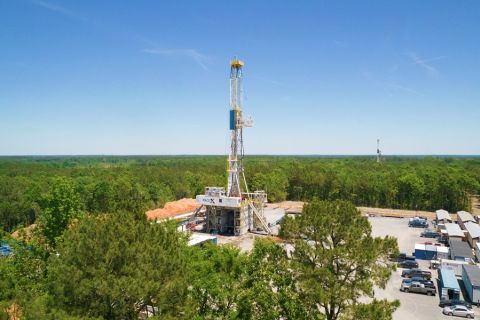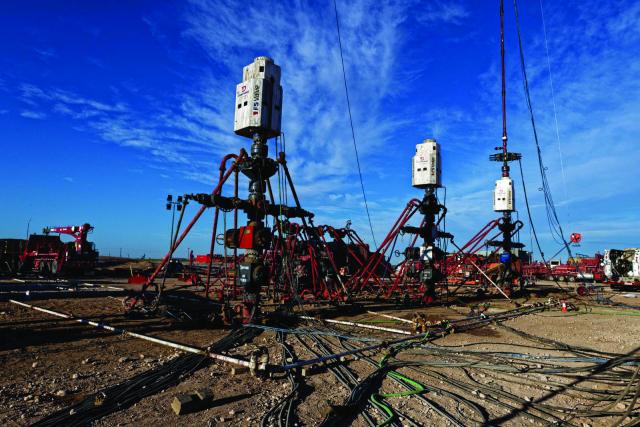
FSCS can help improve frac efficiencies, increase completion rates and reduce costs per well. (Source: Downing USA)
[Editor's note: A version of this story appears in the September 2020 edition of E&P Plus. Subscribe to the magazine here.]
The plug-and-perf (PNP) technique is the most prevalent completion method in North America’s shale and tight oil plays. The method provides the ability to pinpoint fracture locations with perforating guns, adjust stage spacing during the completion, achieve zonal isolation between stages and complete 100 or more stages in a horizontal well.
While preferred versus the sliding sleeve method, the traditional PNP method is highly inefficient and requires personnel to work at height in the red zone. Traditional wireline tool deployment requires three steps.
First, the working valve on the frac tree is shut down manually by a red zone operator. The wireline operator picks up the gun assembly and suspends it over the frac head and the red zone operator. Next, the red zone operator installs the wireline lubricator, which is pressurized using a backside pump. The frac iron is then pressure tested. If successful, the working valve is opened and the wireline tools can be lowered into the well. If the test is unsuccessful, more time is required to find and repair leaks in the iron. Using conventional methods, this entire process takes up to 45 minutes. The use of a latch or wellhead connection unit might reduce the time by 25 minutes.
Removing the wireline string after perforating and transitioning to fracturing the next stage is equally time-consuming, again taking up to 45 minutes depending on the efficiency tools employed. The process begins with the red zone operator closing the working valve manually, releasing the lubricator and bleeding off the pressure.
At this step, closing the valve accidentally on the wireline can cut the wireline, resulting in a costly fishing job of at least a day of nonproductive time (NPT). If a ball is to be dropped, the red zone operator drops it onto the swab valve and then installs the frac head cap. The frac iron is then pressure tested. If successful, the red zone operator manually opens the swab valve, releasing the ball down the wellbore until its seat onto the frac plug, at which point pressure pumping begins.
Improving Completions
The downturn in the oil and gas industry highlights the need for the efficiency enabled by automated technology. Downing’s Freedom Series Completion System (FSCS) lowers well completion costs through surface efficiencies and reduced labor costs and creates safer well sites. The FSCS was designed to improve the efficiency, safety and costs of PNP operations.
The integrated system is located between the frac head and lubricator. It comprises a multichambered valve, a quick-connect latch and an automated ball dropper. The hydraulically actuated valves create three chambers that are operated via a computer from a control cabin or remotely via the cloud. The quick-connect latch enables the lubricator to be attached to the frac tree without personnel working at height in the red zone. With the FSCS, the lubricator can simultaneously attach to the quick connect latch while the well is pumping.
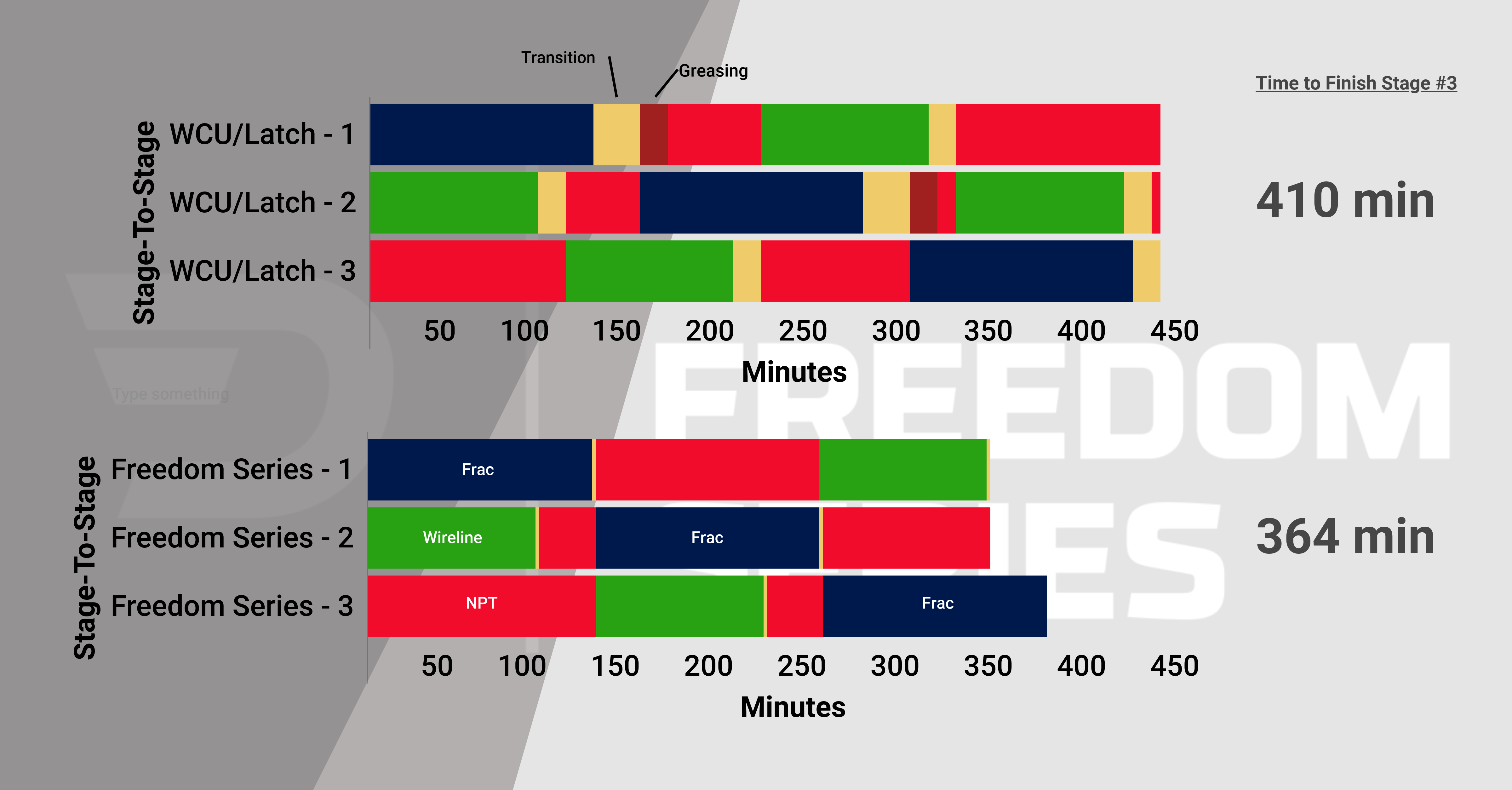
In addition, using Downing’s FS Pump Station, the lubricator is prefilled during the flush cycle, enabling a transition of a few seconds before the wireline is sent downhole.
At each stage, the system’s multichamber system equalizes pressure between the surface/lubricator and the well, enabling wireline conveyed tools, balls and collets to pass easily between the surface and the well without operating the lower master valve and without pressuring down and repressurizing the flow iron.
The system provides a dual barrier to control well pressure so the lubricator can be latched to the wellhead and prefilled while pumping proceeds, compressing stage-to-stage time. The FSCS reduces transition time from 45 minutes to less than 3 minutes, significantly compressing the stage-to-stage time. Quick transitions enable continuous pumping operations on zipper fracs, helping operators significantly increase their pump efficiency.
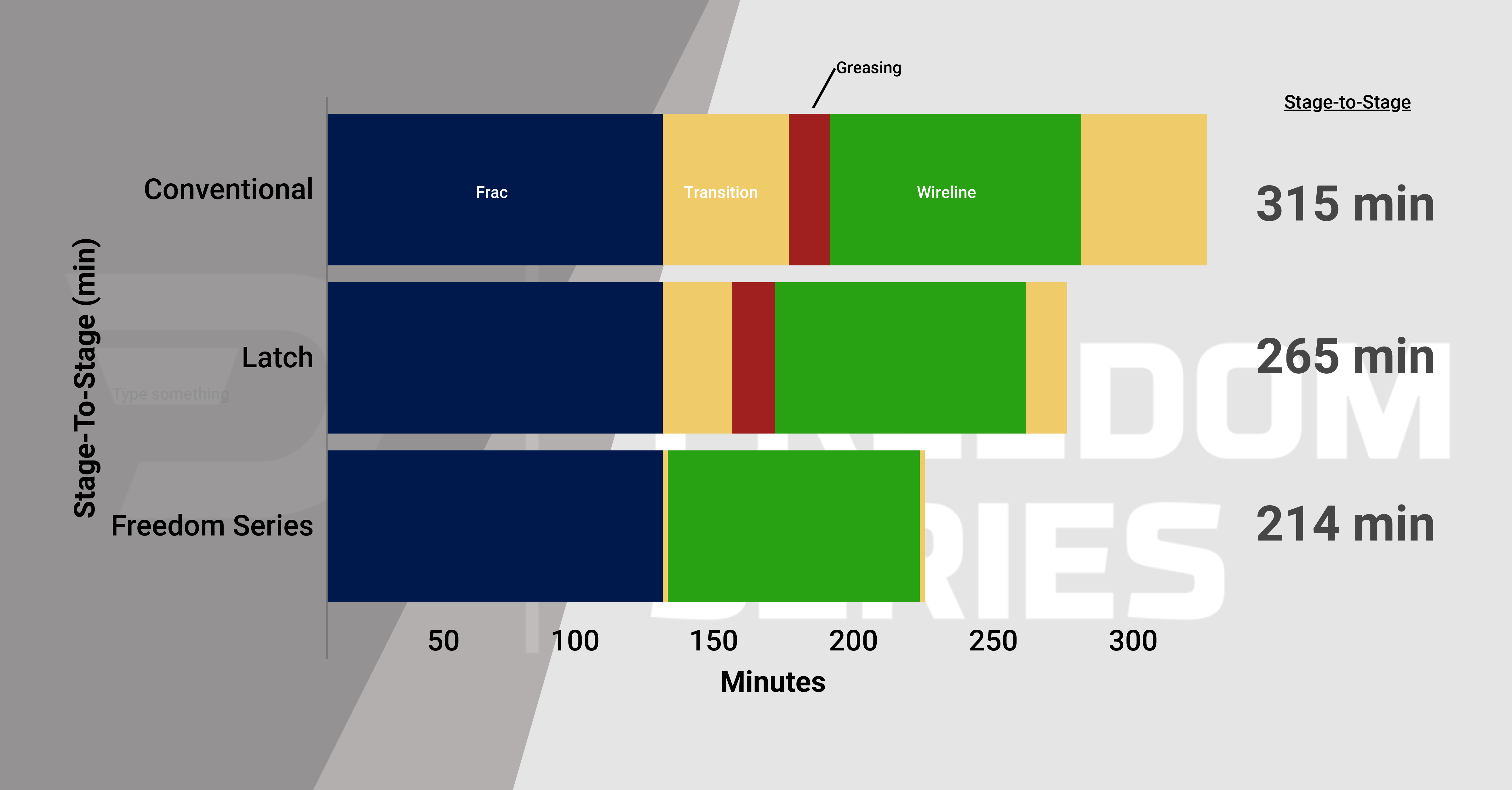
Additional Savings
With the FSCS, wireline tools are run in and out of the well without opening and closing the lower master valve, significantly reducing repair costs and greasing requirements up to 90% in single wells and 50% with zipper operations. Moreover, because the FSCS provides a dual barrier for well control, one hydraulic valve can be removed from the frac stack, further reducing height as well as the cost of the stack.
There is no need to depressurize the frac iron between stages, as required when using the gate valve to contain well pressure when using the FSCS. Because the frac iron does not need to be repressurized, no testing is needed and pumps do not need to be primed, allowing pumping to quickly resume on the next stage after the transition. In addition, frac iron leaks are reduced from the reduction in pressure cycling. And, given that gate valves are cycled only a few times during the entire job, the chance of a gate valve failure and the subsequent replacement time (up to 12 hours of NPT) is significantly reduced.
Downing reports that the FSCS has completed more than 7,500 stages across 180-plus wells without experiencing a gate valve failure on the frac stack.
Completions Automation
The FSCS establishes an automation platform on the well site for adding additional services to further compress stage-to-stage time, reduce potential safety hazards and lower well completion costs. With onsite personnel representing the largest potential safety concerns and added completion cost, attention was focused on automating the remaining frac stack processes and integrating these into the FSCS.
FS iControl was developed to automate the control and greasing of all hydraulic frac valves, eliminating the need for onsite service techs to operate and grease valves.
Integrated with the system workflows, iControl seamlessly operates the zipper hydraulic valves as part of the transition process. During this transition, valves are automatically and precisely greased to manufacturer’s specifications, eliminating potential human error and red zone operations. The exact amount of grease put into each valve is recorded and time-stamped, available to the operator in real time.
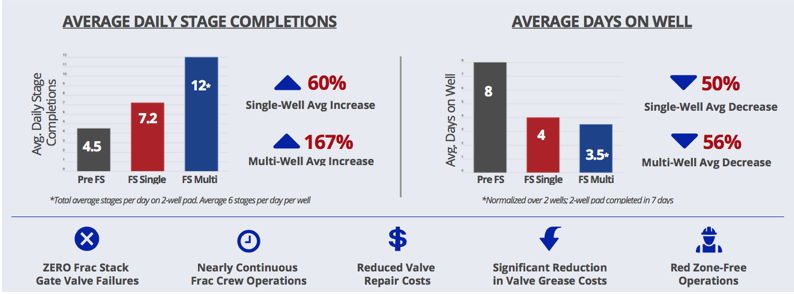
In addition, iControl’s intelligent design detects valve position, ensuring valves remain closed if equalization is not detected, eliminating the risk of accidental pressure release. Finally, with only one accumulator needed on location for up to a four-well zipper frac, the operational footprint is reduced versus conventional greasing manifolds, minimizing equipment costs and further improving safety.
Real-time Analytics
All sensor data are streamed to the cloud in real time. The system incorporates real-time data analytics that provides a comprehensive picture of the operational efficiency. With time-stamped data, analytics and automated milestones from proprietary algorithms, comparing operational efficiency day to day, job to job and crew to crew are readily available.
Job summaries and charting enable individual job analysis or trending across multiple jobs, enabling an operator to quickly modify operations and improve completion efficiency. With a built-in application program interface, data can readily be streamed into an operator’s data aggregation platform.
Finally, the system includes remote operations center support providing live backup and intervention in conjunction with the operator. Remote operations capabilities include cameras enabling inspection of wirelines, check lines and equipment.
Recommended Reading
Marketed: Stone Hill 41 Well Package in Howard County, Texas
2024-02-16 - Stone Hill Exploration and Production has retained EnergyNet for the sale of a Midland Basin 41 well package (11 PDP wells, 5 WIPs and 25 PUD locations) in Howard County, Texas.
Brett: Oil M&A Outlook is Strong, Even With Bifurcation in Valuations
2024-04-18 - Valuations across major basins are experiencing a very divergent bifurcation as value rushes back toward high-quality undeveloped properties.
Marketed: Stone Hill Minerals Holdings 95 Well Package in Colorado
2024-02-28 - Stone Hill Minerals Holdings has retained EnergyNet for the sale of a D-J Basin 95 well package in Weld County, Colorado.
An Untapped Haynesville Block: Chevron Asset Attracts High Interest
2024-04-03 - Chevron’s 72,000-net-acre property in Panola County, Texas is lightly developed for the underlying Haynesville formation — and the supermajor may cut it loose.
IKAV and VTTI to Buy Majority Stake in Italy's Adriatic LNG Terminal
2024-03-27 - The closing of the deal to buy majority stake in the Adriatic LNG terminal by VTTI and IKAV is expected in the second half of the year.


